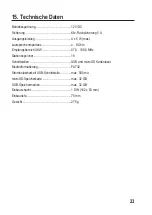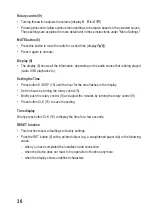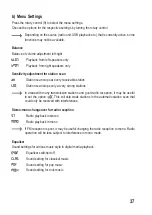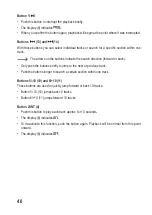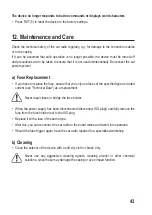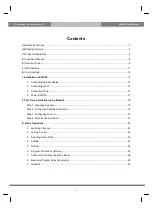
9. Electric Connection
The electric connection should only be made by a qualified specialist.
To avoid short circuits and resulting damage to the device, the negative pole (earth)
of the vehicle battery must be disconnected during the connection activities. Only
connect the negative pole of the battery when you have completely connected the
system and checked the connections.
You should only use a voltmeter or a diode test lamp for checking the voltage of the
on-board cables, as normal test lamps consume excessive currents and can thus
damage the electronics system of the car.
When laying the cables, make sure that they are not squeezed or scoured on sharp
edges. Use rubber grommets for the feed-though points.
The line towards the speakers must be a bifilar cable. Insulate any open connection
points. Make sure that the cables are not damaged by sharp edges.
Only use speakers with sufficient load capacity (see "Technical Data").
Observe that all speakers have the correct polarity - that is, that plus and minus marks
match. The connecting cables of the loudspeakers are usually coded: Some speaker
manufacturers indicate the (+) wire by means of an additional colour stripe, others use
a corrugated cable for the (+) terminal and a smooth one for the (-) terminal.
The system was designed for the operation at speaker impedances of at least 4 Ohm.
Never connect speakers with a lower impedance.
In most vehicles, the cables for the electric connection and the connection of the
speakers have already been laid directly to the slot. If this is not the case, please make
sure that any cables placed later are secured by the respective on-board fuses (see
vehicle operation manual).
a) Aerial connection
•
Connect the aerial plug of your vehicle with the aerial socket at the back of the radio.
•
If your vehicle has a different aerial plug, please use a suitable adapter, available in specialist
shops.
32






